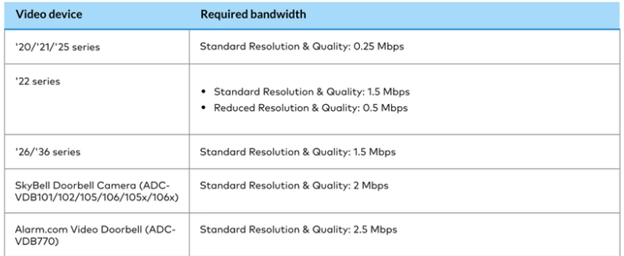Why Your Wireless Cameras Need Reliable WiFi Connection to Work
Your wireless devices such as indoor, outdoor and doorbell cameras work through your home’s Wi-Fi network. To work correctly, the cameras need a stout wireless signal and connection to your network to record and capture footage. When these network requirements are met, they provide the best user experience.
What to do when your wireless cameras are not working:
If you are experiencing any issues with your camera we recommend checking your network connection to see if you have stable or unstable connection. When camera issues arise, it is oftentimes an issue with your home’s network connection.
The wireless signal strength may also depend on the type of building materials your home is made out of and the location of where the cameras are installed. If your cameras are too far from the main panel/hub this may weaken signal communication. If there are walls, trees or any other obstructions, the wireless range is also decreased.
To ensure your cameras are working properly, you will need to:
- Check your camera’s signal strength* and perform an Internet Speed Test if needed
- Contact your Internet service provider to ensure what they provide works with Trinity products and their requirements
- If you have recently changed your network password, you will need to update your password on your Alarm.com Portal to allow cameras to relearn the network
- Include Wi-Fi extenders throughout home for improved signal strength
- Ensure bandwidth requirements are not exceeded as more users are on the network
- Check to see if your camera battery needs to be replaced
*We recommend at least 80% wireless signal strength for best quality video and to lower any unexpected camera behaviors. When a camera’s signal strength is below 55% the signal is very weak and cameras may drop off if signal doesn’t improve.
Internet Connection Type Compatibility

Bandwidth Requirements
Bandwidth is the maximum amount of data transmitted over an Internet connection in a given amount of time. As most of us have now switched to remote learning and working, our home network systems may be overloaded with users on the same network such as you, your spouse and your kids. When the bandwidth goes down due to multiple people in the home using up the network this results in the suffering of quality of camera recordings capabilities
Trinity video devices need an indefinite, always-on internet connection to function reliably. Some internet connections are incompatible due to restrictions they impose on bandwidth usage.
If the internet bandwidth is too low, you must contact your internet service provider to find out how to increase your upload bandwidth.
Minimum Bandwidth for Video Devices

Minimum Bandwidth for Video Devices Using Two-Way Audio

Router Compatibility
Trinity wireless cameras are compatible with most wireless routers. The quality of a router can affect the performance of the video devices as well as the rest of the network. Some routers may also need firmware upgrades to perform reliably.
What your router should have:
- Unique SSID
- Strong password (Include uppercase and lowercase letters, numbers, and symbols)
Perform an Internet Speed Test
We recommend all of our customers that have video/camera devices to perform an Internet Speed Test to ensure their Internet speed is fast and stout enough to work alongside your devices.
If your test results are lower than the minimum, we recommend reaching out to your network provider and ensuring your Internet is strong enough to work alongside Trinity devices. To ensure you have the best user experience with your Trinity wireless cameras, we encourage you to follow all recommendations to help troubleshoot any WIFI/network connection in the event complications arise.